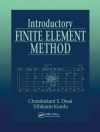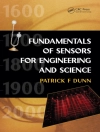The importance of nanotechnology related research and development has become recognised worldwide. Substantial public and private investment is now being ploughed into research and development in a number of industrial sectors, where nanotechnology has become established and has led to new commercial products. The construction industry, having major economic significance with nano-scale research and development which is only emerging, offers a wide scope for exploitation of nanotechnology. With international contributions from experts in the field, Nanotechnology in Construction amalgamates previously fragmented research and emerging trends. It reflects the inherent multi-disciplinary nature of nano-scale research in construction and contributions cover a wide spectrum, from highly scientific investigations to futuristic applications. The book is organised into four broad sections, the first reviews and analyses the prospects of exploitation of nanotechnology in construction, the second discusses novel tools and their capabilities, the final two sections show existing significant products where nanotechnology has been already been exploited or where product development is under-way. Nanotechnology in Construction will appeal to researchers already working in this field as well as those wishing to enter it. It will also inform governmental and other funding agencies of the most promising future directions and their related timescales. Practical applications are considered and explanations of the underlying basics are given, raising awareness and understanding of what nanotechnology can offer to construction professionals in general.
विषयसूची
Nanotechnology and Construction in the 21 Century;
From nanotechnology to new production systems: the EU perspective;
Nanotechnology in civil engineering;
Nanotechnology: business and investment opportunities;
Integration of European nanotechnology research in construction;
Application of nanotechnology in construction – current status and future potential;
Nanotechnology for construction;
beyond the imagery;
Techniques and Instrumentation;
Focused Ion Beams (fib) – tools for serial sectioning of nanoindentation sites in cementitious materials;
Micro – an intermediate step to nano level analysis in concrete like composites;
Applications of Dual Beam in the analysis of construction materials;
Synchrotron-Radiation X-ray Tomography: a method for the 3d verification of cement microstructure and its evolution during hydration;
Observation of the nanostructure of cement hydration by Soft X-ray Transmission Microscopy;
Study of pozzolan-cement interaction by Atomic Force Microscopy (afm);
Estimation of the degree of hydration and phase constitutions by the SEM-BSE image analysis in relation to the development of strength in cement pastes and mortars;
Modification of cement paste with silica fume – a NMR study;
Modelling;
Modelling and temperature dependence of microstructure formation in cement based materials;
Numerical modelling of volume changes in cement-based systems at early ages;
Numerical modelling and experimental observations of the pore structure of cement-based materials;
Virtual concrete: working at the nanometer scale;
Evaluation of theoretical models for assessing interfacial properties in aged grc using fibre push-in test;
Moving-window representation of interfacial debonding in concrete;
Molecular modelling of confined fluids and solid-fluid interfaces in Portland cement and related materials;
Density functional calculation of elastic properties of portlandite and foshagite;
Exploring the micro-mechanics of open-ended pile driving via discrete element modelling;
Materials and Products;
Nanostructure of single carbon fibres investigated with synchrotron radiation;
High-performance nanostructured materials for construction;
Synthesis and characterization of nanoparticulate calcium aluminates;
Effects of water-cement ratio and curing age on the threshold pore width of hardened cement paste;
Effect of curing regime and type of activator on properties of alkali-activated fly ash;
Take a closer look: calcium sulphate based building materials in interaction with chemical additives;
Investigation of the micro-mechanical properties of underwater concrete;
Applications;
Thin films and coatings: atomic engineering;
The Nanohouse™
– an Australian initiative to develop the home of the future;
Building faþade integrated quantum dot concentrated solar electricity production;
Microsystems for the control of cable vibration;
Carbon nanotubes and their application in the construction industry;
Nano-science and -technology for asphalt pavements;
Natural roofing slate: the use of instrumented indentation technique to measure changes in the elastic modulus and hardness due to weathering;
Use of instrumented indentations for quality control of building materials;
Subject Index.












